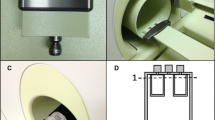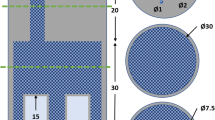Abstract
The CT data acquired in combined PET/CT studies provide a fast and essentially noiseless source for the correction of photon attenuation in PET emission data. To this end, the CT values relating to attenuation of photons in the range of 40–140 keV must be transformed into linear attenuation coefficients at the PET energy of 511 keV. As attenuation depends on photon energy and the absorbing material, an accurate theoretical relation cannot be devised. The transformation implemented in the Discovery LS PET/CT scanner (GE Medical Systems, Milwaukee, Wis.) uses a bilinear function based on the attenuation of water and cortical bone at the CT and PET energies. The purpose of this study was to compare this transformation with experimental CT values and corresponding PET attenuation coefficients. In 14 patients, quantitative PET attenuation maps were calculated from germanium-68 transmission scans, and resolution-matched CT images were generated. A total of 114 volumes of interest were defined and the average PET attenuation coefficients and CT values measured. From the CT values the predicted PET attenuation coefficients were calculated using the bilinear transformation. When the transformation was based on the narrow-beam attenuation coefficient of water at 511 keV (0.096 cm–1), the predicted attenuation coefficients were higher in soft tissue than the measured values. This bias was reduced by replacing 0.096 cm–1 in the transformation by the linear attenuation coefficient of 0.093 cm–1 obtained from germanium-68 transmission scans. An analysis of the corrected emission activities shows that the resulting transformation is essentially equivalent to the transmission-based attenuation correction for human tissue. For non-human material, however, it may assign inaccurate attenuation coefficients which will also affect the correction in neighbouring tissue.
Similar content being viewed by others
Author information
Authors and Affiliations
Corresponding author
Additional information
Received 1 December 2001 and in revised form 9 February 2002
Electronic Publication
Rights and permissions
About this article
Cite this article
Burger, C., Goerres, G., Schoenes, S. et al. PET attenuation coefficients from CT images: experimental evaluation of the transformation of CT into PET 511-keV attenuation coefficients. Eur J Nucl Med 29, 922–927 (2002). https://doi.org/10.1007/s00259-002-0796-3
Published:
Issue Date:
DOI: https://doi.org/10.1007/s00259-002-0796-3




